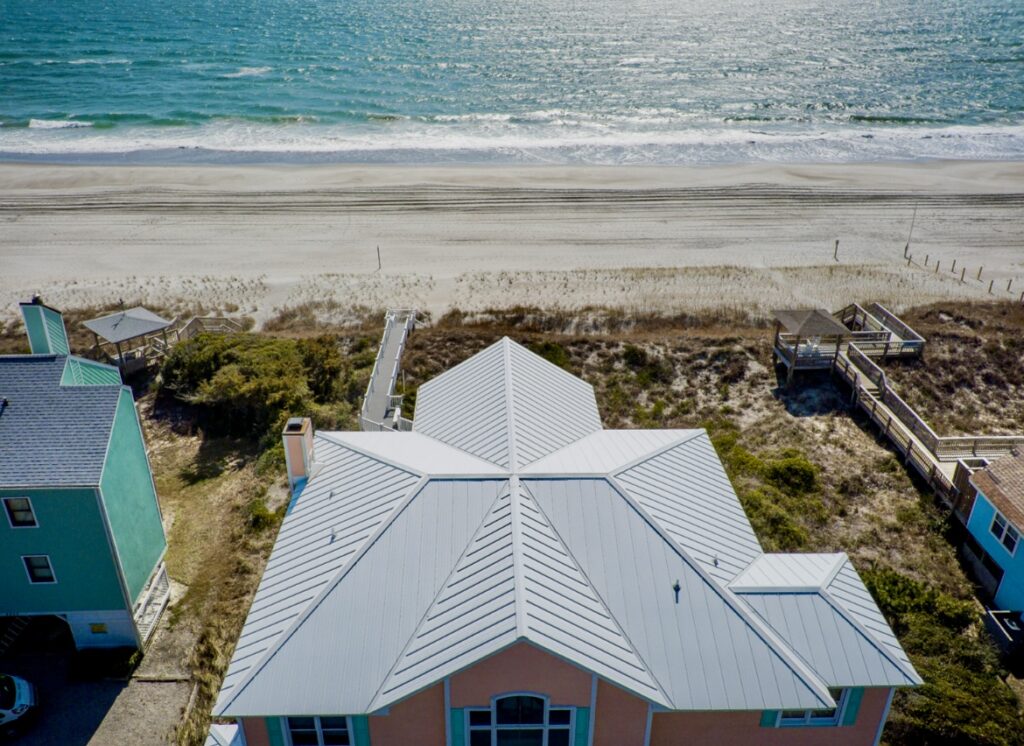Key Components to Building a Fortified Roof

The beauty and charm of living on the coast in North Carolina is like a dream for most people. It can feel as if you are always on vacation, because of the salt air are the slower pace of life, which is why Wilmington, North Carolina was voted one of the most desired places to move to in 2022 by Southern Living. However, owning property in North Carolina does comes with some risks and it all starts with the roof! A well constructed roof will not only shield your home from tropical weather but will enhance it’s energy efficiency and the overall value of your home.
Today we are featuring Product Specialist, Diana Watkins where she breaks downs the key components and specific steps used to Fortify a roof following the IBHS standards. Watch now and learn what it takes to Fortify a roof through Patriot Roofing.
Documentation – First and foremost is documentation. Each crew leader will take 100-200 pictures documenting each step and the materials used for the roof installation.
Decking – It all starts with the decking! If the decking is rotted or is not the correct thickness the decking will be removed and new decking will be re-installed, ensuring the base of the roof is solid. The decking serves as the foundation for your entire roof, as it supports the weight of the roofing materials and the weight of additional weather, such as rain or snow, which will help prevent sagging or collapse.
Re-Nail – Nailing the decking system with 2 3/8 inch ring shank nails every four inches across the truss line ensures the decking system is secure and cannot be lifted by high winds. The nailing process is also documented to ensure it meets the specifics for the FORTIFIED standard.
Waterproof – The two ways to waterproof the decking is taping the seams and using a self adhesive which is called ice and water which creates a tight waterproof bond to keep your home dry, even if the shingles have been removed or blown off due to high winds. A roof underneath your roof is what Diana calls it!
Next, the underlayment is installed with special cap nails. The underlayment is a critical component because it acts as an additional barrier against water penetration. The nailing process during this installation is also documented.
Drip Edge – The drip edge is a key component because it stops uplift winds from pulling your shingles off your roof. This is not code in North Carolina, however it is required for a FORTIFIED roof installation. The drip edge also directs water into the gutters, preventing it from running down the side of the roof, which can lead to water damage.
Starter Strip – Before we add the shingles, starter strip is installed, which will bond with the shingles. Starter strip is the first line of defense against wind and water by anchoring the first row of shingles securely in place. As you can see by now, there are many layers that are applied under the roof before we even start with the shingles. The shingles are just one component of process.
Shingle Installation – Our shingle of choice is Owens Corning Duration Shingle because of its 130MPH wind resistance rating, durability, advanced technology and aesthetic appeal. Each shingle has a SureNail strip, which is a reinforced nailing zone. The nailing zone will have six nails nailed into the strip which helps fasten the shingle securely to the roof.
Type of Nails – The type of nails used is based on the location of your property. We use hot dipped galvanized nails if you are more than 1000 feet from ocean water. However, If your home is located in the barrier islands we will use stainless steel nails to prevent rust and corrosion, Even in harsh weather conditions stainless steel nails won’t rust which will help maintain the integrity of your roof for a longer period of time.

A FORTIFIED roof is more than just a roof – it’s a comprehensive system designed to protect your home from the harshest weather conditions. By investing in a fortified roof you are investing in the integrity of your home. Whether you are building a new home or upgrading your current one, understanding these key components will help you make informed decisions before tropical weather hits home.
To learn more about FORTIFIED visit our website or call 910-218-0600 for a free consultation.
If you haven’t heard, there is still time to apply for the $6000 Fortified grant through North Carolina Insurance Underwriters Association. Apply here to get started or visit us here for further questions.

